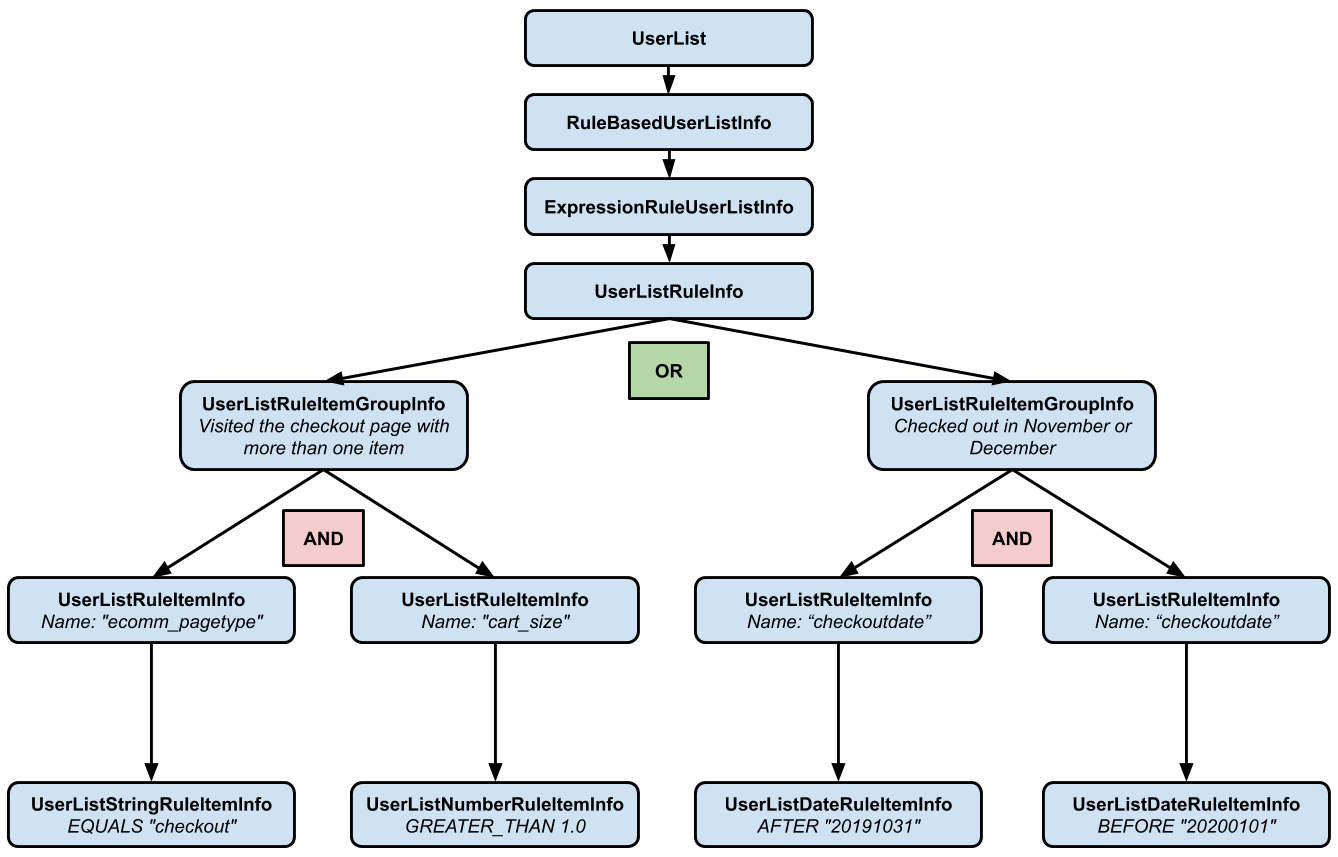สมมติว่าคุณมีเว็บไซต์ที่กำหนดค่าพารามิเตอร์แท็กรีมาร์เก็ตติ้งที่กำหนดเองหลายรายการเพื่อบันทึกแอตทริบิวต์ต่อไปนี้ของผู้ใช้
event- หมวดหมู่ของหน้าเว็บในเว็บไซต์ เช่น การชำระเงิน รถเข็น ฯลฯcartsize- จํานวนสินค้าในรถเข็นช็อปปิ้งของผู้ใช้checkoutdate- วันที่ที่ผู้ใช้ชำระเงิน คุณตั้งค่าพารามิเตอร์นี้ก็ต่อเมื่อผู้ใช้ทำการซื้อเสร็จสมบูรณ์แล้วเท่านั้น
คุณสนใจที่จะแสดงการแสดงผลต่อผู้ใช้ที่เพิ่มสินค้าหลายรายการลงในรถเข็นช็อปปิ้งและเริ่มกระบวนการชำระเงิน นอกจากนี้ คุณยังต้องการค้นหาผู้ใช้ที่ทําการซื้อในช่วงเดือนพฤศจิกายนและธันวาคมด้วย เนื่องจากคุณวางแผนที่จะจัดโปรโมชันลดราคาครั้งใหญ่ในเว็บไซต์ในช่วงเดือนดังกล่าว
คุณอธิบายชุดผู้ใช้นี้ได้ด้วยกฎต่อไปนี้
- ผู้ใช้ที่เข้าชมหน้าชำระเงินและมีสินค้ามากกว่า 1 รายการในรถเข็น
- ผู้ใช้ที่ชำระเงินในช่วงเดือนพฤศจิกายนหรือธันวาคม
หากผู้ใช้จัดอยู่ในหมวดหมู่ 1 หรือหมวดหมู่ 2 คุณต้องการเพิ่มราคาเสนอในกลุ่มโฆษณาหรือแคมเปญที่เฉพาะเจาะจง 25%
วัตถุ
ดูโครงสร้างของกลุ่มเป้าหมายตามกฎ รายการที่อิงตามกฎจะแสดงใน Google Ads API เป็น rule_based_user_list
แผนภาพต่อไปนี้แสดงลักษณะของ
rule_based_user_list สำหรับ Use Case นี้เมื่อเราดำเนินการเสร็จแล้ว


